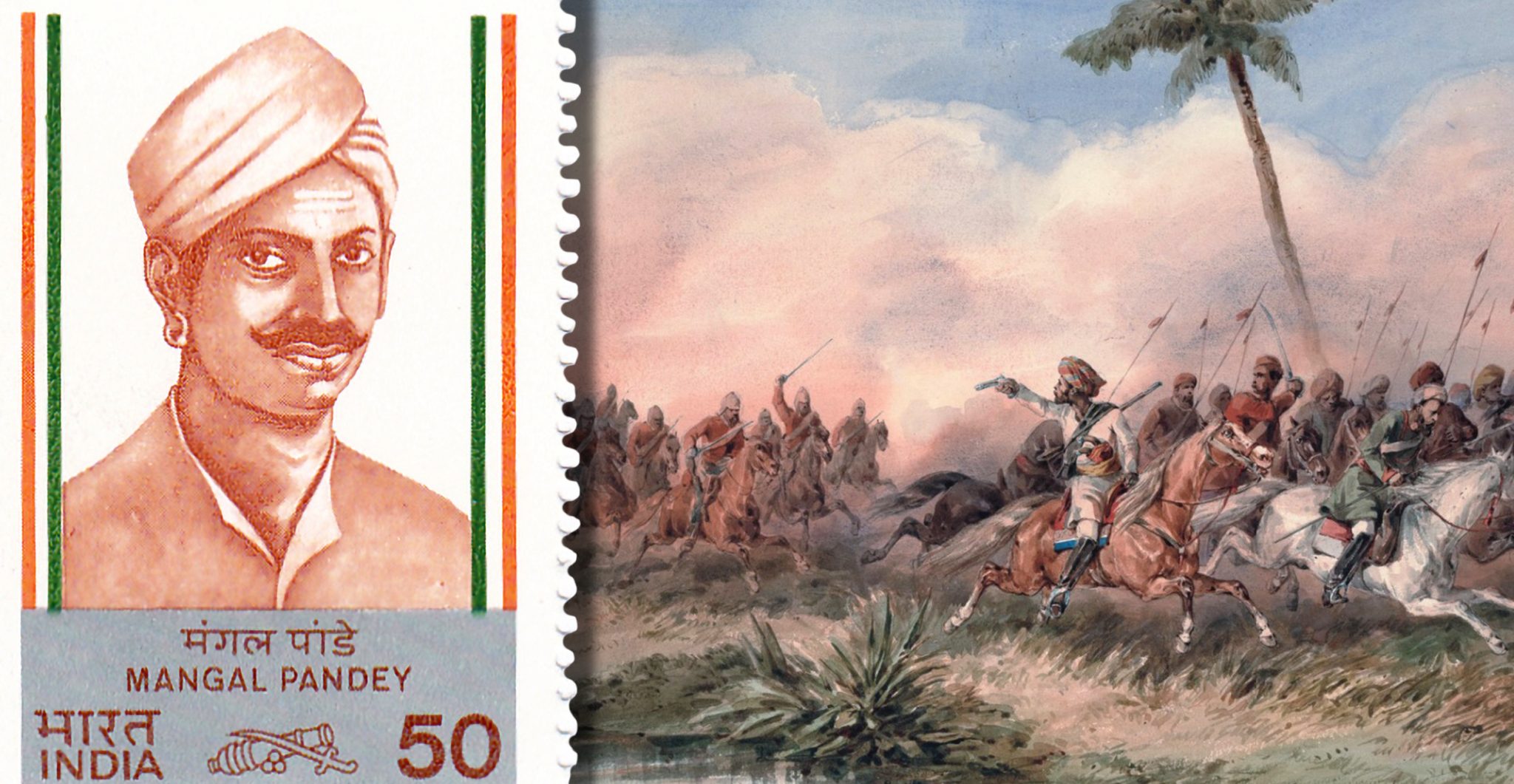On the afternoon of March 29th, 1857, a Sepoy of the 34th Bengal Native Infantry (BNI) took aim at his English officer and fired the first shot in a rebellion which would shake the British Empire to its foundations and bring to a close the long rule of the Honorable East India Company.
The Life of Mangal Pandey
Mangal Pandey was born on July 19th, 1827 in the village of Surhurpur in Uttar Pradesh. Like his father Divakir, he was a devout Hindu Brahmin. In 1849, the 22-year-old Pandey enlisted as a Sepoy in the 5th Company, 34th BNI were he served without incident until 1857.
Pandey would have been aware of the rising discontent throughout the Army of Bengal. As an especially pious man, he would have shared the frustration of other upper caste Hindus over the insensitivity of “John Company” towards their religion.
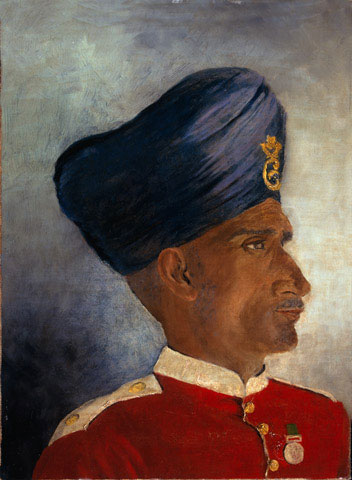
The most pressing issue was the rumor that the cartridges issued for use with the Enfield rifles were greased with either pig or cow fat. Both Muslim and Hindu Sepoys believed that as the end of the cartridge had to be bitten off when loading they would be defiled.
There had been several incidents where Sepoys had risked court-martial by refusing to drill with the new cartridges. A mutiny was being encouraged by religious agitators and by early 1857 it was inevitable. It just needed a catalyst.
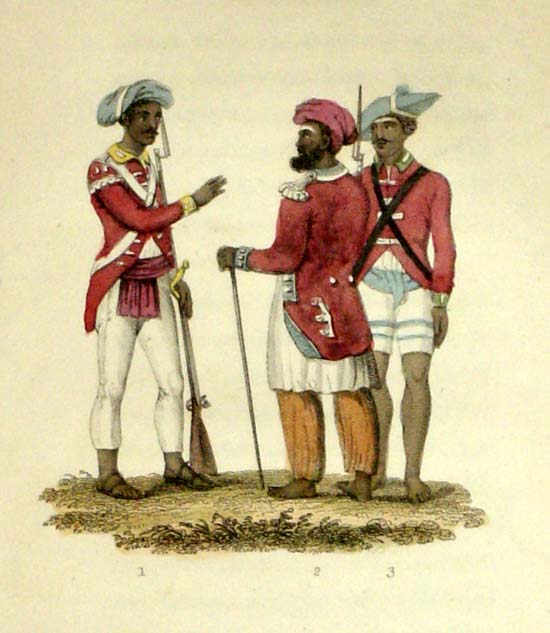
Barrackpore March 29th, 1857
Unrest among the Sepoys of the 34th BNI had been building throughout the day and by mid-afternoon word reached the British officers and NCOs of potential trouble. Sergeant Major James Thornton Hewson was the first to arrive on the parade ground where he was confronted by an agitated Mangal Pandey brandishing a loaded musket.
Hewson ordered the Indian officer (Jemadar) in charge of the guard to disarm and arrest Pandey. The Jemadar, Ishwari Prasad, declined. Hewson was joined by the adjutant, Lieutenant Baugh who was fired on by Sepoy Pandey as he approached. The shot hit Baugh’s horse and before he could disentangle himself Pandey wounded him with two blows from a heavy sword.
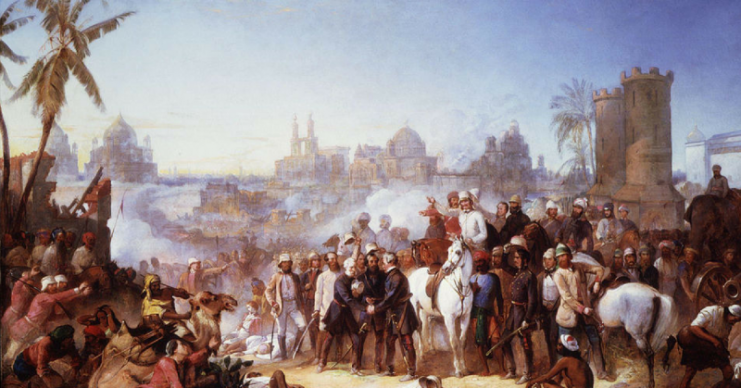
The sounds of gunfire had drawn many of the Sepoys to the parade ground and one of them, Shaikh Paltu, rushed forward to restrain Pandey, probably saving Baugh’s life. As the mood of the assembled Sepoys grew more and more ugly Hewson and Baugh began to retire.

Order was restored by the arrival of the commanding officer, General Hearsay, flanked by his two sons. In a remarkable display of personal bravery, Hearsay placed himself in front of the guard and drew his revolver vowing to shoot the first man to disobey him.
General Hearsay ordered the intimidated Sepoys to arrest Pandey who on seeing their approach tried to end his life by shooting himself in the chest with his own musket. The wounded Pandey was taken into custody along with Jemadar Prasad. Sepoy Paltu was promoted to Havaldar (Sergeant) on the spot by Hearsay for his courageous intervention.
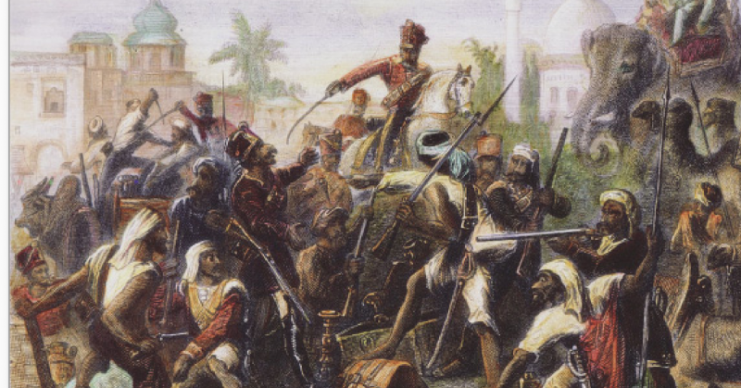
The Outcome
Sepoy Mangal Pandey was tried by a court-martial assembled from native officers where his character was described as good and his previous seven years of service recorded as being without incident. It was established that Pandey was a frequent user of opium and cannabis.
The defendant declined the opportunity to cross-examine any of the witnesses against him, saying only “I did not know who I wounded and who I did not, what more shall I say? I have nothing more to say, I have no evidence”. The court found him guilty and on the evening of April 8th, 1857 he was hanged before the assembled regiment.
Jemadar Prasad was also hanged two weeks later and on May 6th after a lengthy investigation the 34th Regiment BNI was disbanded in disgrace. Less than a week later Sepoys at Meerut rose up and killed their officers beginning the Great Mutiny which would last until 1859 and cost the lives of thousands on both sides.
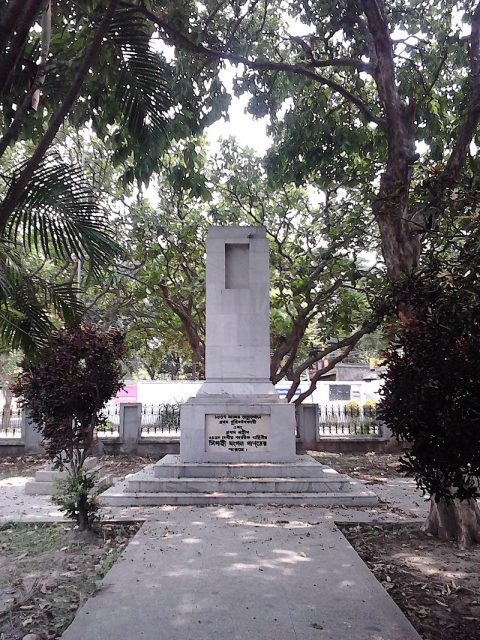
The Pandey Legend
British troops referred to rebellious Sepoys as “Pandies” and the term was in use throughout the rebellion.
Read another story from us: British Army’s Greatest Humiliation – The Fall of Singapore
While many modern historians and writers try to portray Pandey as an early Indian nationalist it should be noted that Pandey, like most of the rebels, was acting because of his religious convictions, not a desire to create an independent state. He was almost certainly acting under the influence of narcotics rather than Nationalist fervor. The 1857 mutiny would likely have taken place with or without Mangal Pandey.
